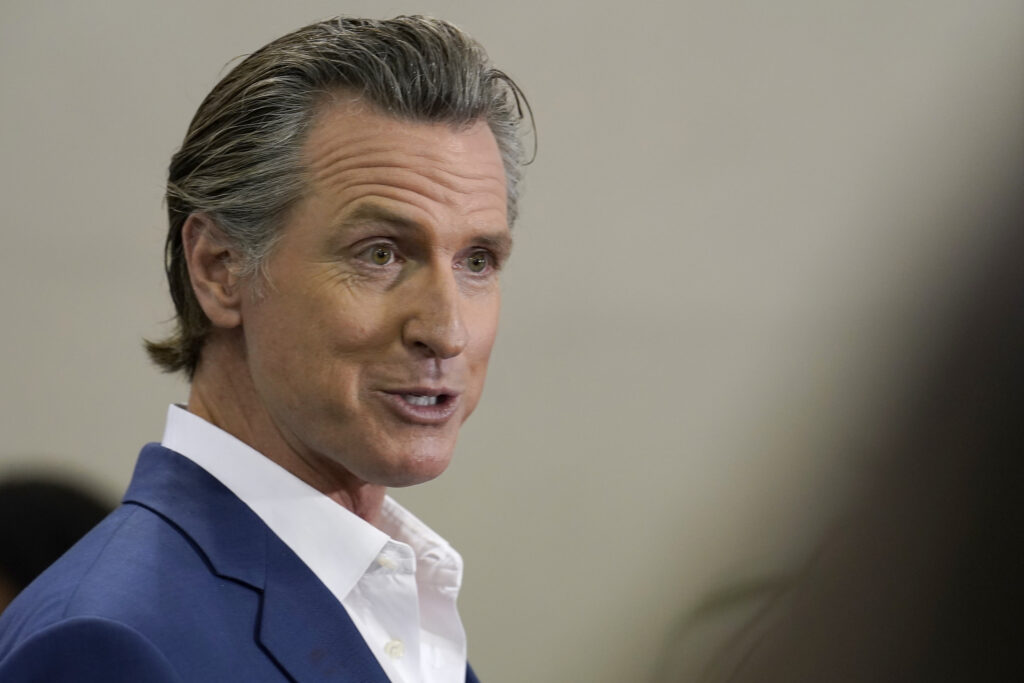
Credit: Alison Yin/EdSource
One year ago, we wrote in this space that it was time for an honest conversation about California’s structural budget problems. We noted that despite the record level of education spending the state was planning, the highly volatile nature of state tax revenues could change that good news into bad nearly overnight. Nobody cared.
That our cries about a falling sky were ignored last year wasn’t surprising. We were writing only a few months after Gov. Gavin Newsom had reported a surplus of nearly $100 billion in the May 2022 revision. And, his January 2023 budget still projected a “nothing to see here” vibe, despite shifting into a modest deficit. Things were looking pretty OK twelve months ago. Now they aren’t, and despite the governor’s optimism, the fiscal situation may be bad for some time to come, which is why we are picking up this conversation again. If you care about the future of California’s schools and students as we do, you’ll agree we need to have a serious discussion about supporting our education investments with stable revenue.
The Legislative Analyst’s Office identified a $68 billion “budget problem” in its latest fiscal outlook. The even more dire news, however, came earlier, when its revenue forecasters declared that the state had entered an economic downturn in 2022, resulting in a significant revenue shortfall for budget promises made during 2023-24, and persistent deficits anticipated through 2027-28. On a national level, there is talk of a “soft landing” for the economy. In California, the ride looks to be a bit bumpier.
And predictably, talk of cutting K-12 funding has already started to emerge. We know from the Great Recession that lawmakers quickly cut per-pupil funding, delayed payments to schools, and swapped funding with local governments. We have the Proposition 98 reserve to draw on this time, but the LAO notes that those funds may dry up to get us out of the 2023-24 and 2024-25 budget hole, leaving school districts in a precarious funding situation if the economy worsens.
But, as they say in the infomercials, “Wait, there’s more.” There has been a significant push from state leaders to develop a “continuous improvement” model for California schools. This has meant a significant financial investment — in the realm of billions of dollars — in the recruitment and retention of teachers, new programs that address students’ social and emotional learning needs, and experiments with “whole child” approaches to schooling by funding programs like community schools. The issue is that funding for many of these programs was one-time only. Ignoring the issue of school funding stability means that the state’s strategy to shift learning paradigms is at risk of losing resources in the coming years.
The governor just released his draft budget for the 2024-25 fiscal year with the deficit and education funding featuring prominently. It means that while there will be belt-tightening for schools, much of the gap will be closed by delaying funding to a variety of programs, including preschool, transitional kindergarten and full-day facilities grants, and funding for the UC and CSU systems. The strategy appears to be to fund the status quo this year. Draw upon reserves. Delay some funds here, shift a few billion there. And, generally avoid, where possible, cutting back on special projects funded with one-time funds. Then, hope it doesn’t get any worse.
Notably, the governor’s Department of Finance is projecting a deficit of $38 billion or $30 billion less than the LAO’s figure from five weeks earlier. That isn’t trivial. Part of the explanation is that recent stock market gains contributed to a more positive revenue picture. Major shifts in tax revenue are, as the governor essentially stated, “normal” in California. That is the problem.
Fixing the state’s structural fiscal problems will be difficult, and all pieces need to be part of the discussion. This includes reforming Proposition 13, accounting for long-term liabilities such as pensions, and broadening the sales tax base to include services. The conversation must include incentives for the state and local governments to save. It could include unconventional elements such as a sovereign wealth fund, or unpopular ones such as a broadly based consumption tax or resurrecting the state’s inheritance tax.
Taking a hard look at how the state funds education needs to happen. Uneven funding means that strategic investments like continuous improvement become two steps forward and a step or two back, then repeat. If we are serious about transforming California’s schools and supporting students with adequate and equitable funding, we need to start talking —and acting — to secure stable funding.
•••
Erin Heys is policy director and senior researcher at the Berkeley Institute for Young Americans, a research center affiliated with the Goldman School of Public Policy at the University of California Berkeley.
Patrick Murphy is director of resource equity and public finance at The Opportunity Institute, a national education policy organization that focuses broadly on cradle-to-career education policy, and is a professor at the University of San Francisco.
The opinions in this commentary are those of the authors. If you would like to submit a commentary, please review our guidelines and contact us.






